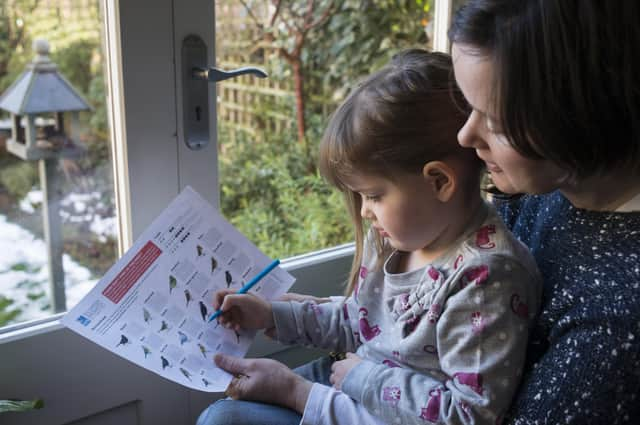The Wildlife Column with the RSPB: Count on the Big Garden Birdwatch to see how our birds are doing


The world’s largest garden wildlife survey returns, with hundreds of thousands of people watching and counting the UK’s garden birds over the last weekend in January for the RSPB’s Big Garden Birdwatch.
Over a million people took part in 2021, counting 17 million birds – making it the biggest Birdwatch ever! In East Yorkshire, nearly 9,000 people joined in.
Advertisement
Hide AdAdvertisement
Hide AdOver the past year, we’ve seen how important the natural world is to our mental health and wellbeing.
There has been a surge in interest in the nature on our doorsteps and many people have come to rely on garden birds to bring joy and comfort in these unsettling times.
This year’s event takes place on 28, 29 and 30 January 2022. People across East Yorkshire are set to get involved, spending just an hour of their time recording the birds that land as seen from their windows, balconies or gardens, and submitting their results to the wildlife charity.
Just 60 minutes every year, for the last four decades, has made the RSPB’s Big Garden Birdwatch the largest garden wildlife citizen science project.
Advertisement
Hide AdAdvertisement
Hide AdNow in its 43rd year, over 150 million birds have been counted giving the RSPB an astonishing amount of insight into how our wildlife is faring.
For four decades, Big Garden Birdwatch has highlighted the winners and losers in the garden bird world. Last year, the house sparrow was top of East Yorkshire’s rankings as the most commonly seen garden bird. The starling and blackbird completed the top three.
House sparrows and starlings are the UK’s most sighted birds, but a closer look at Big Garden Birdwatch data shows that numbers have in fact dropped dramatically since the Birdwatch began in 1979. House sparrows are down 58% while starlings are down 83%.
To take part in the Big Garden Birdwatch 2022, watch the birds in your garden or local park for one hour at some point over the three days. Only count the birds that land, not those flying over. Tell us the highest number of each bird species you see at any one time – not the total you see in the hour.
Advertisement
Hide AdAdvertisement
Hide AdWe were blown away by the enthusiasm with which people took part in the Birdwatch in 2021. We know that for many people, garden birds provide an important connection to the wider natural world and bring enormous joy.
Over the last year, there has been a broad and much-needed realisation that nature is an important and necessary part of our lives especially for our mental health and wellbeing.
But nature needs us too.
By taking part in the Birdwatch, you are helping to build an annual snapshot of how our birdlife is doing across the UK.
It is only by us understanding how our wildlife is faring that we can protect it.
Advertisement
Hide AdAdvertisement
Hide AdFor your free Big Garden Birdwatch guide, which includes a bird identification chart, top tips for your birdwatch, RSPB shop voucher, plus advice on how to help you attract wildlife to your garden, text BIRD to 70030 or visit www.rspb.org.uk/birdwatch
The parallel event RSPB Big Schools’ Birdwatch is running until February 21.
In 2021, it celebrated its 20th anniversary of connecting children with nature in their school grounds.
Since its launch, over a million school children and teachers have taken part.
Further information can be found at www.rspb.org.uk/schoolswatch.